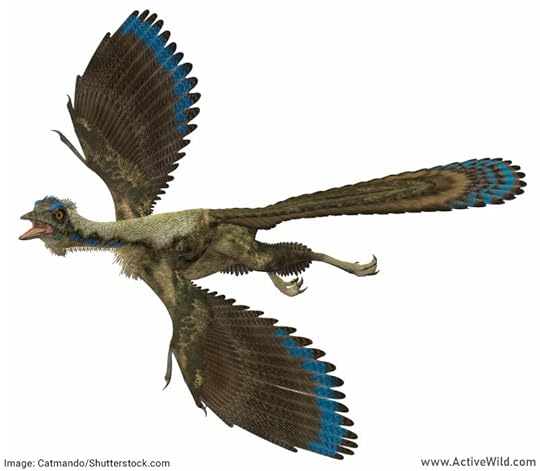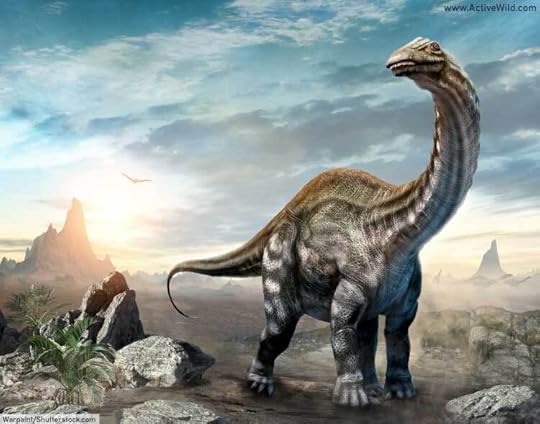The Challenge Factory discussion
Coding the Dinosaur DNA
>
Nora Examines Dinosaur DNA
Possible Dinosaur Matches
1. Allosaurus
2. Apatosaurus
3. Ankylosaurus
4. Archaeopteryx
5. Brachiosaurus
6. Brontosaurus
7. Coelophysis
8. Compsognathus
9. Diplodocus
10. Giganotosaurus
11. Gallimimus
12. Iguanodon
13. Parasaurolophus
14. Spinosaurus
15. Stegosaurus
16. Therizinosaurus
17. Triceratops
18. Troodon
19. Tyrannosaurus Rex
20. Velociraptor
1. Allosaurus
3. Ankylosaurus
10. Giganotosaurus
11. Gallimimus
13. Parasaurolophus
16. Therizinosaurus
Welcome to Costa Rica, Dr. Grant. How many samples of dinosaur DNA will you be examining? And which one do you want to start with?
 I would like to please examine 20 samples of dinosaur DNA and I would like to please start with #17. Triceratops.
I would like to please examine 20 samples of dinosaur DNA and I would like to please start with #17. Triceratops.

* Common name: Triceratops
* Type of dinosaur: Ornithischian
* Size: 30 ft./9m
* Period: Late Cretaceous
Triceratops was a large, powerful, plant-eating dinosaur that lived in what is now North America. It is one of the most famous dinosaurs, and one of the most recognizable, due to its three horns (one on its snout, the other two at the top of its face), and the large bony shield that extends backwards from the back of the skull.
The horns and shield may have been defensive adaptations against predators (Triceratops lived alongside fearsome predators such as Tyrannosaurus Rex), but they may have been used for courtship or establishing dominance against other Triceratops.
To identify this dinosaur, complete one of the following:
1. read a book with a large or powerful MC
2. read a book from the Books with Fictional Vegetarian or Vegan Characters list
3. read a book with a three word title (including articles)
4. read a book with 'horns' or 'shield' in the text of the book
5. read a book tagged 'History', 'Historical" or "Historical Fiction'
 COMPLETION POST: #1 OF 20
COMPLETION POST: #1 OF 20Is the DNA Triceratops?
TASK: 5. read a book tagged 'History', 'Historical" or "Historical Fiction'
BOOK: My Brilliant Friend: The Graphic Novel: Based on the novel by Elena Ferrante
PAGES: 256
How it Fits: The book has a MPG of "Historical Fiction".

*Common name: Diplodocus
* Type of dinosaur: Sauropod
* Size: 79 ft./24 m
* Period: Late Jurassic
A sauropod dinosaur, Diplodocus was typical of its type, being a huge, four-legged, plant-eating animal with a long neck and whip-like tail.
Diplodocus may have had a row of triangular spikes running along its back.
The structure of the peg-like teeth of Diplodocus suggest that it grasped a branch in its mouth, then moved its head up or down to strip foliage from the branch.
With a center of gravity located near its hips, Diplodocus is likely to have been able to rear up on its hind legs, using its tail as support. This would have allowed the dinosaur to reach foliage located high up in the trees.
To identify this dinosaur, complete one of the following:
1. read a book with '4' in the page count
2. read a book from the Literary Love Triangles (Non-YA) list
3. read a book with UP or DOWN in the title (can be part of a word)
4. read a book with trees on the cover
5. read a book tagged 'History', 'Historical' or "Historical Fiction'
 COMPLETION POST: #2 of 20
COMPLETION POST: #2 of 20Is the DNA Diplodocus?
TASK: 2. read a book from the Literary Love Triangles (Non-YA) list
BOOK: The Phantom of the Opera
PAGES: 360
How It Fits: This book is included on the list.

* Common name: Coelophysis
* Type of dinosaur: Theropod
* Size: 10 ft./3 m
* Period: Late Triassic – Early Jurassic
Famous for being one of the earliest-known dinosaurs, Coelophysis is a 10 ft./3 m long dinosaur that lived in what is now the southwestern United States. (Specimens have also been found in southern Africa.)
Coelophysis was a fast-moving bipedal (two-legged) hunter. Its relatively small teeth and slender arms suggest it preyed on animals significantly smaller than itself.
Large numbers of Coelophysis specimens found together suggest it may have lived or hunted in packs.
To identify this dinosaur, complete one of the following:
1. read a book published in 2010
2. read a book set in Arizona or Nevada
3. read a book within 24 hours
4. read a book where the MC belongs to a pack or group of some kind
5. read a book tagged 'History', 'Historical' or 'Historical Fiction'
 COMPLETION POST: #3 of 20
COMPLETION POST: #3 of 20Is the DNA Coelophysis?
TASK: 4. Read a book where the MC belongs to a pack or group of some kind
BOOK: The Secret Adversary
PAGES: 266
HOW IT FITS: Tuppence works with Tommy and Julius P. Hershiemmer to find Jane Finn who is missing.

* Common name: Brontosaurus
* Type of dinosaur: Sauropod
* 72 ft./22 m
* Period: Late Jurassic
Brontosaurus is one of the most famous sauropod dinosaurs, but for many years wasn’t actually considered to be a valid genus. This is because, after Brontosaurus had been named, it was decided that the specimen was, in fact, an Apatosaurus.
Apatosaurus had been named first, and when naming species, the rule is that the first name is the one that should be used. Therefore, Brontosaurus should have been renamed Apatosaurus.
Research carried out in the 21st century suggests that Brontosaurus is sufficiently different to Apatosaurus to be considered a genus in its own right. Therefore, Brontosaurus was again considered to be an “official” dinosaur, although not all paleontologists agree with this decision.
To identify this dinosaur, complete one of the following:
1. read a book that has been republished with a different title
2. read the first book in a duology, trilogy, or series
3. read a book published in the 21st century
4. read a book with an official as a significant character (an official is a person holding public office, having official duties, or holds a position of authority in an organization)
5. read a book tagged 'History', 'Historical' or 'Historical Fiction'
 COMPLETION POST: #4 OF 20
COMPLETION POST: #4 OF 20Is the DNA Brontosaurus?
TASK. 2. Read the first book in a duology, trilogy, or series
BOOK: Skyward
PAGES: 513
HOW IT FITS: This book is the first book in the series.

* Common name: Stegosaurus
* Type of dinosaur: Ornithischian
* Size: 30 ft./9m
* Period: Late Jurassic
Most people can identify a Stegosaurus due to the distinctive plates that run along the dinosaur’s back. The plates may have offered a means of defense against predators or played a part in keeping the dinosaur’s body at the correct temperature. Today, it is thought the plates’ most likely function is that they were used in display, to signify dominance and to attract a mate.
Even if the plates’ primary function wasn’t defense, Stegosaurus was by no means defenseless. Its tail was equipped with four long (up to 3 ft./1.5 m) spikes. In many specimens, the spikes are worn or damaged, suggesting that they were used in combat when the dinosaur was alive.
To identify this dinosaur, complete one of the following:
1. read a book where the MC uses a disguise to hide his/her identity
2. read a book from the Dishes on the Cover list
3. read a book with a season in the title (Spring, Summer, Fall, Autumn, Winter)
4. read the 4th book in a series
5. read a book tagged 'History', 'Historical" or "Historical Fiction'
 Completion Post: #5 of 20
Completion Post: #5 of 20Is the DNA Stegosaurus?
TASK: 5. read a book tagged’History’, ‘Historical’ or ‘Historical Fiction’
Book: Silver Nitrate
Pages: 323
How It Fits: This book has an MPG of ‘Historical Fiction’.

* Common name: Brachiosaurus
* Type of dinosaur: Sauropod
* Size: 75 ft./23m
* Period: Late Jurassic
First discovered in Colorado, United States, Brachiosaurus is a sauropod from the Late Jurassic period. It can be distinguished from other sauropods by its extra-long front legs, which gave its body a downward-sloping appearance.
The genus name Brachiosaurus, which means “arm lizard”, refers to the dinosaur’s long front legs.
Brachiosaurus is likely to have held its neck erect and would have been capable of reaching foliage around 50 ft/15 m above the ground.
Brachiosaurus appears in this list of famous dinosaurs because it appears in two notable scenes in Jurassic Park. It is the first dinosaur seen by paleontologists Drs Grant and Sattler. Later in the movie, a Brachiosaurus sneezes over one of the children.
To identify this dinosaur, complete one of the following:
1. read a book set in Colorado, USA
2. read a book where the MC has long legs or is very tall
3. read a book that was first published over 50 years ago (1972 or earlier)
4. read a book where the MC is a doctor of some kind
5. read a book tagged 'History', 'Historical' or 'Historical Fiction'
 COMPLETION POST: #6 OF 20
COMPLETION POST: #6 OF 20Is the DNA Brachiosaurus?
TASK: 5. read a book tagged 'History', 'Historical' or 'Historical Fiction'
BOOK: Lost Autumn
PAGES: 404
HOW IT FITS: This book is tagged 'Historical Fiction"

* Common name: Compsognathus
* Type of dinosaur: Theropod
* Size: 4.33 ft./1.32 m
* Period: Late Jurassic
Compsognathus was a small, bipedal, meat-eating dinosaur that lived in what is now Europe in the Late Jurassic.
An almost-complete Compsognathus fossil was found in Germany in the mid-nineteenth century. Scientists know the species is predatory because this specimen had the fossilized remains of a lizard in its stomach. A slightly larger Compsognathus specimen was found in France around 100 years later.
For many years, Compsognathus was famous for being the smallest-known dinosaur. However, several smaller dinosaurs have since been found.
To identify this dinosaur, complete one of the following:
1. read a book published in a year ending in '2' (2022, 2012, 2002, 1992, and so on)
2. read a book set in continental Europe
3. read a book that is tagged 'New Adult'
4. read a book by an author you have just discovered
5. read a book tagged 'History', 'Historical' or 'Historical Fiction'
 COMPLETION POST: #7 OF 20
COMPLETION POST: #7 OF 20Is the DNA Compsognathus?
TASK: 4. Read a book by an author you have just discovered
BOOK: The Downstairs Girl
PAGES: 374
HOW IT FITS: This is the first book I have read by Stacey Lee.

* Common name: Archaeopteryx
* Type of dinosaur: Theropod
* Size: 1 ft./30cm long
* Period: Late Jurassic
The discovery of Archaeopteryx, a crow-sized, feathered dinosaur, provided evidence to support Charles Darwin’s theory of Evolution. This is because Archaeopteryx had characteristics of both reptiles and birds, suggesting that the ancestors of Archaeopteryx were dinosaurs and that its descendants would be modern birds. Fossils such as these are known as “transitional fossils”.
Archaeopteryx had feathered wings and is believed to have been able to fly. Unlike modern birds (and like reptiles), it had teeth and a long tail.
The importance of Archaeopteryx in establishing the link between dinosaurs and birds, together with its extremely well-preserved fossils, mean that it is one of the most famous dinosaurs.
To identify this dinosaur, complete one of the following:
1. read a book where the MC looks for evidence
2. read a book where the MC's first or last name begins with 'C' or 'D'
3. read a book set in a country where your ancestors came from
4. read a book Transitional Chapter Books Series list (if you read a book from this list, there is no page minimum requirement)
5. read a book tagged 'History', 'Historical' or 'Historical Fiction'
 COMPLETION POST: #9 of 20
COMPLETION POST: #9 of 20Is the DNA Archaeopteryx?
TASK: 5. Read a book tagged ‘History’, ‘Historical’ or ‘Historical Fiction’.
BOOK: Forged in Love
PAGES: 304
HOW IT FITS: This book has an MPG of Historical Fiction.

* Common Name: Apatosaurus
* Type of dinosaur: Sauropod
* Size: 82 ft./25m
* Period: Late Jurassic
Apatosaurus was a huge, plant-eating dinosaur that lived in the Late Jurassic. It had a typical sauropod body plan, with a long neck and tail, and large body supported by four sturdy legs.
The first Apatosaurus was named in 1877 by paleontologist Othniel Charles Marsh. Marsh later found another, even larger, sauropod, which he named Brontosaurus.
Since then, there has been much argument over whether or not Brontosaurus was in fact an Apatosaurus. Later discoveries have led to both of these famous dinosaurs being recognized.
Apatosaurus had a stockier build than related sauropods, with thick legs and a deep chest. It may have been able to produce a loud cracking sound with its whip-like tail.
To identify this dinosaur, complete one of the following:
1. read a book with two 7s in the published date (ex., July 10, 2017)
2. read a book with an author that uses three names (ex., Louisa May Alcott)
3. read the 2nd book in a duology, trilogy, or series
4. read a book from the Sounds list
5. read a book tagged 'History', 'Historical' or 'Historical Fiction'
 COMPLETION POST: #10 of 20
COMPLETION POST: #10 of 20Is the DNA Apatosaurus?
TASK: 5. Read a book tagged’History’, ‘Historical’ or ‘Historical Fiction’
BOOK: The Paris Seamstress
PAGES: 448
HOW IT FITS: This book has an MPG of ‘Historical’ and‘Historical Fiction’.
Books mentioned in this topic
City of Jasmine (other topics)Gideon the Ninth (other topics)
A Small Death in the Great Glen (other topics)
The Paris Seamstress (other topics)
Forged in Love (other topics)
More...






Dr. Grant, thank you for coming all the way to Costa Rica to examine the DNA. We hope you will enjoy your time here at the biological preserve on Isla Nublar. You should have no worries for your safety. *cue eerie music that will cause shivers up and down your spine*
Your task is to code the dinosaur DNA (read one task from the five tasks given for a dinosaur). You will then post on the DNA Verification thread asking for confirmation whether you have successfully deduced the correct DNA.
If you have not, you will then read for the next dinosaur.
Before you begin the process, I will ask how many dinosaurs you wish to read for. There are 20 possible matches to the unidentified DNA. This number will be noted in your Completion Posts.
HOW TO PLAY:
1. Take a look at the list of dinosaurs.
2. Choose your first extinct reptile and post it into your thread.
3. The moderator will then post the related information and tasks.
4. When you have read one of the tasks, post on your thread the following:
Completion Post (#? of ?)
Is the DNA (dinosaur name goes here)?
Task:
Book:
Pages:
How it Fits:
5. And then leave a message on the DNA Verification thread.
Rules:
* Books must be at least 140 pages.
* You can use or ignore 'a', 'an, 'the'
* Page count for audio books will be determined the first paper version shown on Goodreads. On the book's page, select “all editions”, then use the first paper edition to determine the page number.